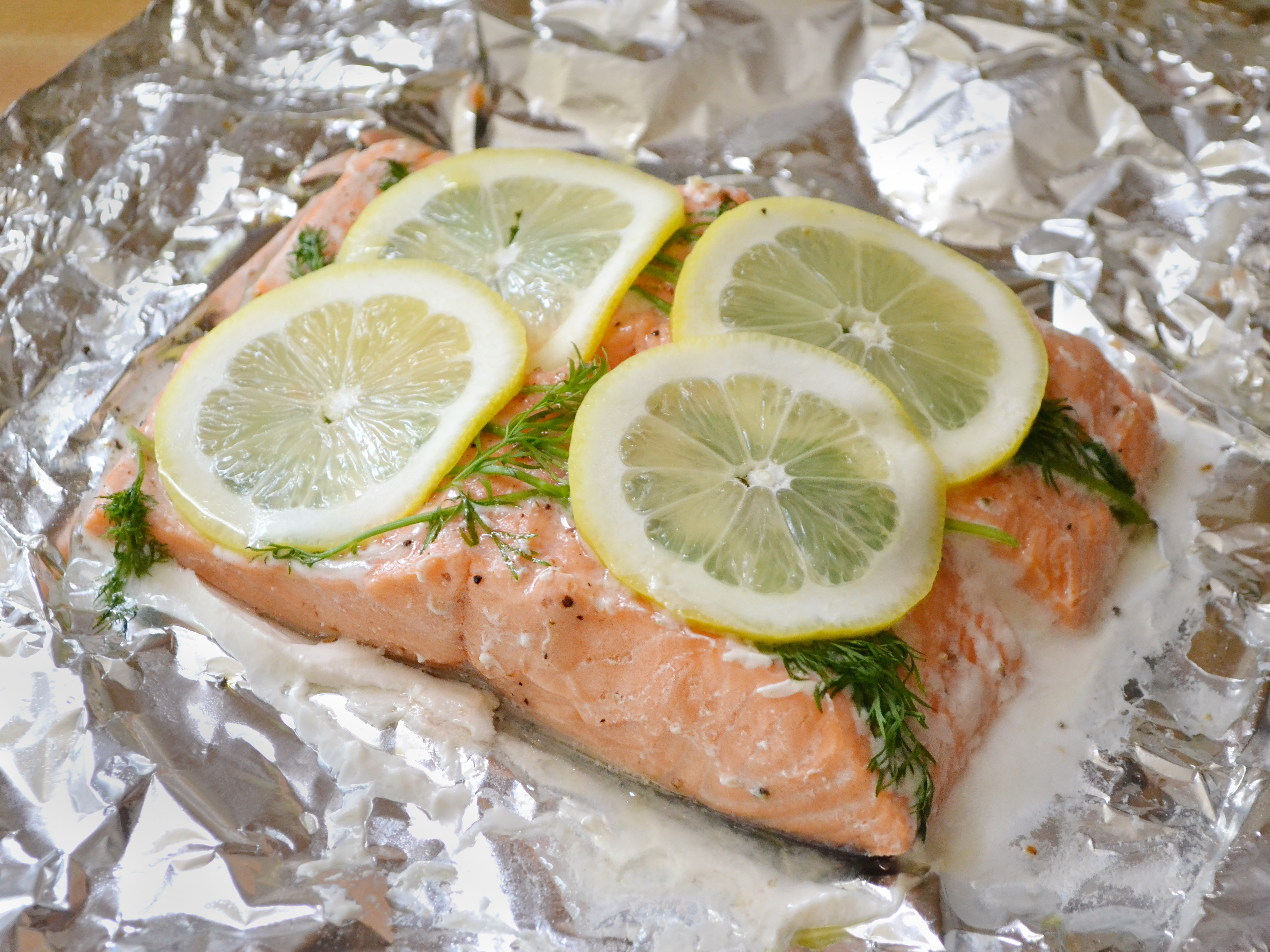
How to Cook Salmon in a Dishwasher
Wow your dinner guests as you pull perfectly cooked, flaky salmon out of the dishwasher.
It may have started out as a party trick, but those who have tried cooking salmon in a dishwasher know that it produces the tenderest and juiciest salmon you'll ever taste. As it turns out, the same moist heat environment that cleans and sanitizes dishes is also perfect for slow cooking salmon to buttery perfection. And don't worry, the salmon is sealed up airtight, so you won't wind up with any soap or dirty dish debris in your dinner.
1 Pick your salmon

Start with single portion-sized pieces of salmon. Keeping the pieces small (as opposed to cooking one large filet) will maximize their exposure to the heat and ensure that the salmon cooks through. Keep the skin on the salmon to help it hold together during cooking, but remove the scales by scraping with a chef's knife, if they're still attached.
2 Arrange salmon on foil

Tear off two 24-inch long pieces of aluminum foil. Lay the pieces of foil one on top of the other for strength with the shiny sides facing up. To prevent the fish from sticking, smear a small amount of olive oil over the surface of the foil or give it a quick spritz with non-stick spray. To make sure there is enough foil to tightly wrap around the fish, only place two six-ounce portions of salmon in each foil packet (you can cook multiple packets in the dishwasher at once). Place the fish on the foil and season with salt, pepper and any fresh herbs or spices you like. I like to keep it simple with a few sprigs of fresh dill and a couple thin slices of lemon.
3 Enclose salmon in foil

Bring the two long sides of the foil up to meet in the center and then fold them down multiple times to create a tight seal. Fold the two open ends in towards the center in the same manner until you've created an airtight foil packet. Press down lightly on the packet to test whether or not it is airtight. If air escapes as you press, you'll need to try again. The packet must be air tight to seal out the dishwater and seal in the flavor.
4 Put foil packets in dishwasher

Place the foil packet on the top rack of the dishwasher. The bottom rack is too close to the heat element and the forceful water jets that can potentially damage the foil packet. The top rack, even if it has its own jets, is designed for delicate dishes and should keep the fish safe and secure during the wash cycle.
5 Turn on dishwasher

Begin a normal wash and dry cycle. Although cycle lengths and temperatures vary from model to model, most normal wash cycles reach approximately 150 degrees and last about one hour. Heavy wash or pots and pan cycles tend to be higher heat and longer duration, which can over cook the salmon. Stay away from energy saver or air dry cycles, which use less heat and pose the risk of not cooking the salmon completely.
6 Remove salmon from dishwasher

After the wash and dry cycle has ended, carefully remove the foil packet and open it to reveal your perfectly "poached" dishwasher salmon (make sure your friends or family are around for the big reveal!). If you're the worrisome type, you can use an instant read or meat thermometer to make sure the internal temperature of the fish has reached 140 degrees.
7 Serve and enjoy

And just like that, in a feat of kitchen appliance sorcery you've cleaned your dishes and cooked a brag worthy piece of salmon. Now sit back, enjoy that velvety piece of salmon, and the knowledge that there are no dishes waiting to be cleaned.
